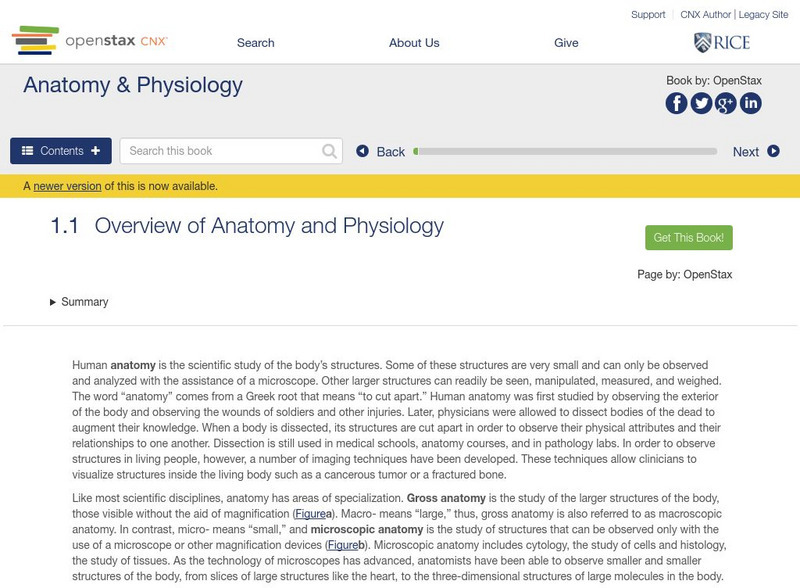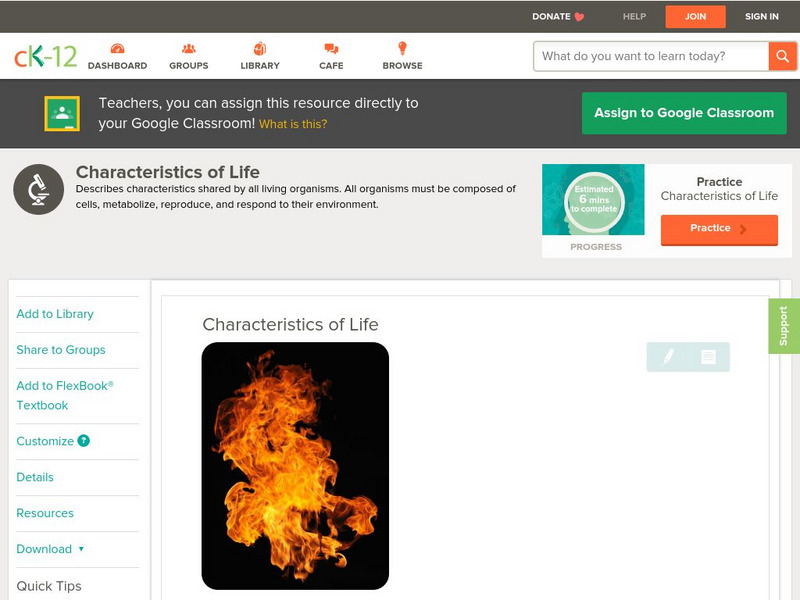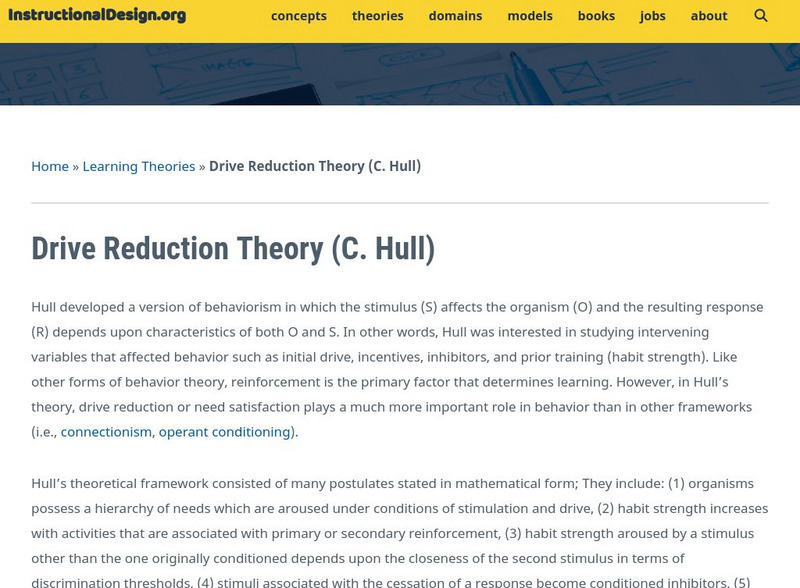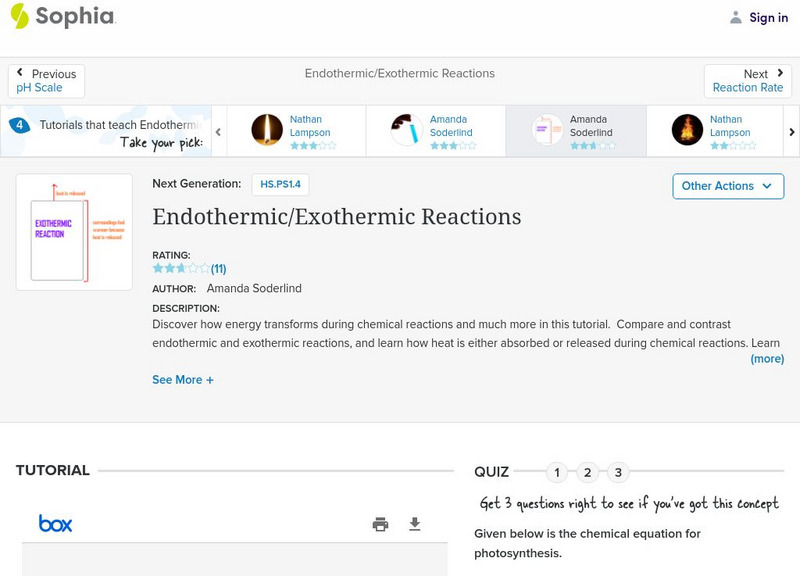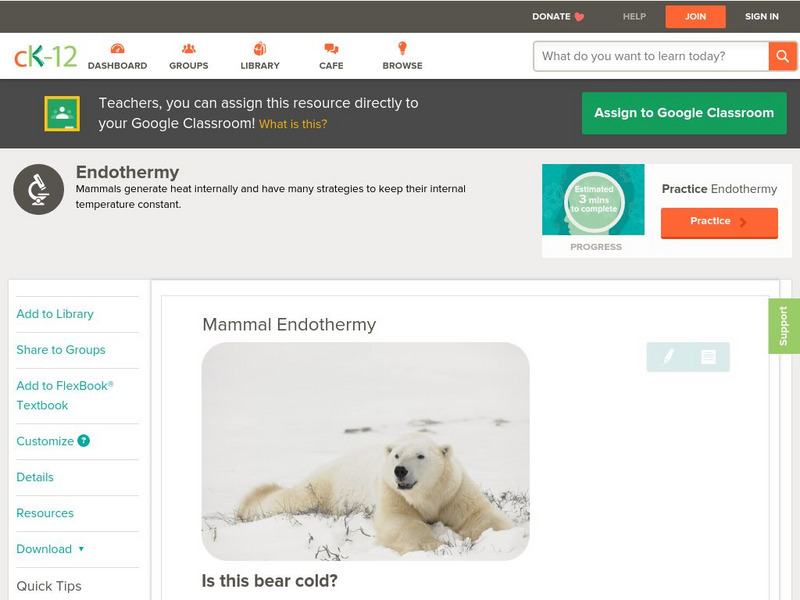Famous Scientists
Famous Scientists: Claude Bernard
Read about Claude Bernard, one of the first to suggest the use of blind experiments to ensure the objectivity of scientific observations.
OpenStax
Open Stax: Overview of Human Anatomy and Physiology
This site provides an overview of human anatomy, the scientific study of the body's structures. It also includes an overview of human physiology, he scientific study of the chemistry and physics of the structures of the body and the ways...
CK-12 Foundation
Ck 12: Biology: Principles of Biology
[Free Registration/Login may be required to access all resource tools.] Covers the four unifying principles of biology.
CK-12 Foundation
Ck 12: Life Science: Characteristics of Life
[Free Registration/Login may be required to access all resource tools.] How do you define a living thing? What do mushrooms, daisies, cats, and bacteria have in common? All of these are living things, or organisms. It might seem hard to...
CK-12 Foundation
Ck 12: Biology: Characteristics of Life
Describes the characteristics of life. [Free Registration/Login may be required to access all resource tools.]
Georgia State University
Georgia State University: Hyper Physics: Radiation Cooling of Body
Discusses the means by which the body regulates its temperature. The role of radiation in this process is explained. An equation for calculating the rate at which energy is transferred by radiation is presented. Also, an interactive...
CK-12 Foundation
Ck 12: Life Science: Cell Transport
[Free Registration/Login may be required to access all resource tools.] Cells are found in all different types of environments, and these environments are constantly changing. For example, one-celled organisms, like bacteria, can be...
CK-12 Foundation
Ck 12: Biology: Human Body: Organization Study Guide
This comprehensive study guide covers the main terms and concepts needed for a unit on the organization levels in the human body from organ systems to cells.
Khan Academy
Khan Academy: Are Viruses Dead or Alive?
Are viruses alive or dead? How do we determine whether something is alive? Let's compare viruses to the 7 criteria researchers have set to determine if something is alive.
Khan Academy
Khan Academy: What Is Tuberculosis?
An overview of tuberculosis (TB) or consumption which is an infectious disease caused by bacterium, Mycobacterium tuberculosis. Examined are the affects of tuberculosis on the lungs, latent tuberculosis vs. active tuberculosis, symptoms,...
CK-12 Foundation
Ck 12: Life Science: 1.8 Characteristics of Life
Discover the five characteristics that all living things have in common.
Other
Tip: Drive Reduction Theory
This site from the Theory Into Practice Websit provides scientific explanation of the drive reduction theory proposed by American psychologist Clark Hull. Good example and list of main principles.
Sophia Learning
Sophia: Endothermic/exothermic Reactions: Lesson 3
This lesson explains the difference between endothermic and exothermic chemical reactions. It is 3 of 4 in the series titled "Endothermic/Exothermic Reactions."
Sophia Learning
Sophia: 7 Characteristics of Life: Lesson 4
This lesson will introduce the 7 characteristics of all living things. It is 4 of 4 in the series titled "7 Characteristics of Life."
CK-12 Foundation
Ck 12: Biology: Mammal Endothermy
[Free Registration/Login may be required to access all resource tools.] Describes how mammals maintain their body temperature.
BiologyWise
Biology Wise: Active Transport Process
Explains what happens during the active transport process where substances are moved across a cell membrane.
Khan Academy
Khan Academy: Tissues, Organs, & Organ Systems
Describes the main tissue types and organ systems of the body and how they function together.
Other popular searches
- Homeostasis Experiment
- Homeostasis Questions
- Human Homeostasis
- Heart Rate Homeostasis
- Biology Homeostasis
- Active Reading Homeostasis
- Maintaining Homeostasis
- Body Homeostasis
- Homeostasis and Cells
- Diseases and Homeostasis
- Human Body Homeostasis
- Plant Homeostasis

